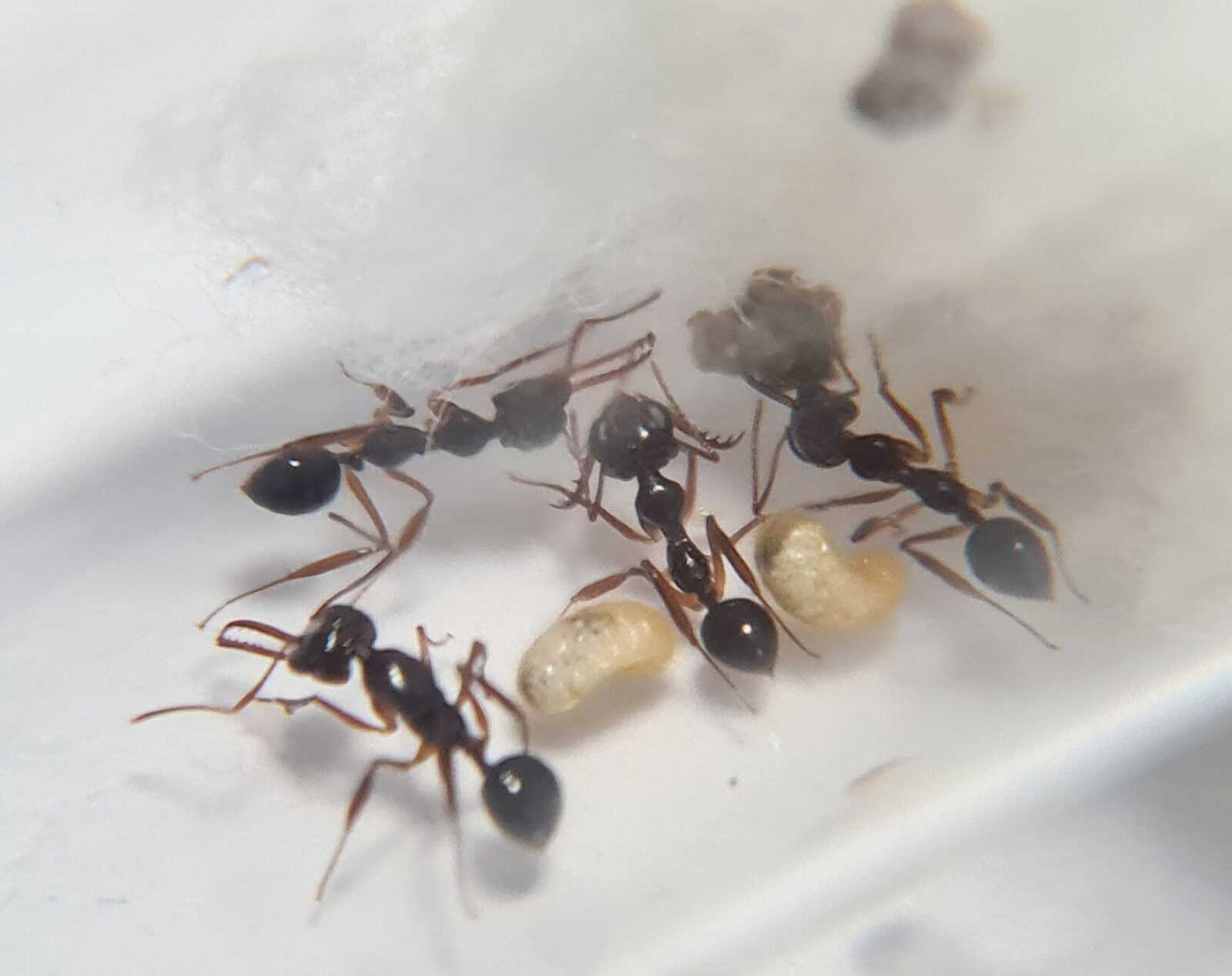Myrmoteras opalinum: The Ultimate Ant Colony
Welcome to the world of Myrmoteras opalinum, a fascinating ant species that will capture your attention with their unique features and impressive colony dynamics. In this detailed product description, we will explore the many aspects of these ants, including their colony type, size, development rate, color, nutrition, humidity and temperature requirements, as well as their remarkable features and recommended nests for breeding.
Colony Type: Monogynous
Myrmoteras opalinum is a monogynous ant species, meaning that each colony consists of a single queen. This unique characteristic influences the behavior and dynamics of the colony, resulting in a cohesive and harmonious social structure.
Colony Size
The colony size of Myrmoteras opalinum can reach up to 400 workers. With such a large workforce, these ants are capable of achieving impressive feats and constructing intricate tunnel systems within their nests.
Development Rate
The development rate of Myrmoteras opalinum can be described as medium-paced. From egg to adult worker, these ants go through a carefully orchestrated set of growth stages, ensuring the efficient development and expansion of the colony.
Size and Color
The queen of Myrmoteras opalinum measures between 6-8 mm, while the workers range from 5-7 mm in size. Their distinct coloration is a beautiful combination of brown and orange, adding a touch of vibrancy to their presence.
Nutrition
When it comes to their diet, Myrmoteras opalinum are primarily insectivorous. They have an incredible ability to capture and subdue their prey using their sharp jaws and stinging capability. Additionally, these ants have a particular fondness for sweet fruit, which serves as a supplementary source of nutrition.
Humidity and Temperature Requirements
Creating a suitable environment is crucial for the well-being and development of Myrmoteras opalinum colonies. In terms of humidity, the recommended levels are between 60-70% in the arena and 60-80% within the nest. Maintaining appropriate temperature conditions is equally important. The arena should ideally be kept between 24-30 °C, while the socket or nesting area should remain at a slightly lower temperature of 24-26 °C.
Remarkable Features
Myrmoteras opalinum possesses a set of remarkable features that make them stand out among other ant species. Their sting is a unique defense mechanism that helps them protect their colony and secure resources. But it’s their jaws that truly set them apart – capable of opening up to an impressive 230 degrees, they possess incredible speed and precision in catching prey, ensuring it remains within their grasp.
In addition to their powerful jaws, Myrmoteras opalinum boasts large eyes and excellent eyesight. This combination of physical attributes enables them to navigate their environment with ease, identify potential threats or food sources from a distance, and communicate effectively within their colony.
Recommended Nests for Breeding
Providing the appropriate nesting environment is essential when breeding Myrmoteras opalinum. Gypsum and aerated concrete serve as suitable materials for constructing the nests. These materials offer stability, insulation, and help regulate humidity levels within the nests, ensuring the well-being and successful development of the colony.
Embark on a captivating journey into the world of Myrmoteras opalinum. Witness their monogynous social dynamics, appreciate their size and coloration, marvel at their remarkable features, and discover the optimal conditions for their growth and development. Create a perfect habitat for these ants, and let their extraordinary qualities and behaviors mesmerize you, providing endless fascination and enjoyment for ant enthusiasts of all levels!

















Reviews
There are no reviews yet.